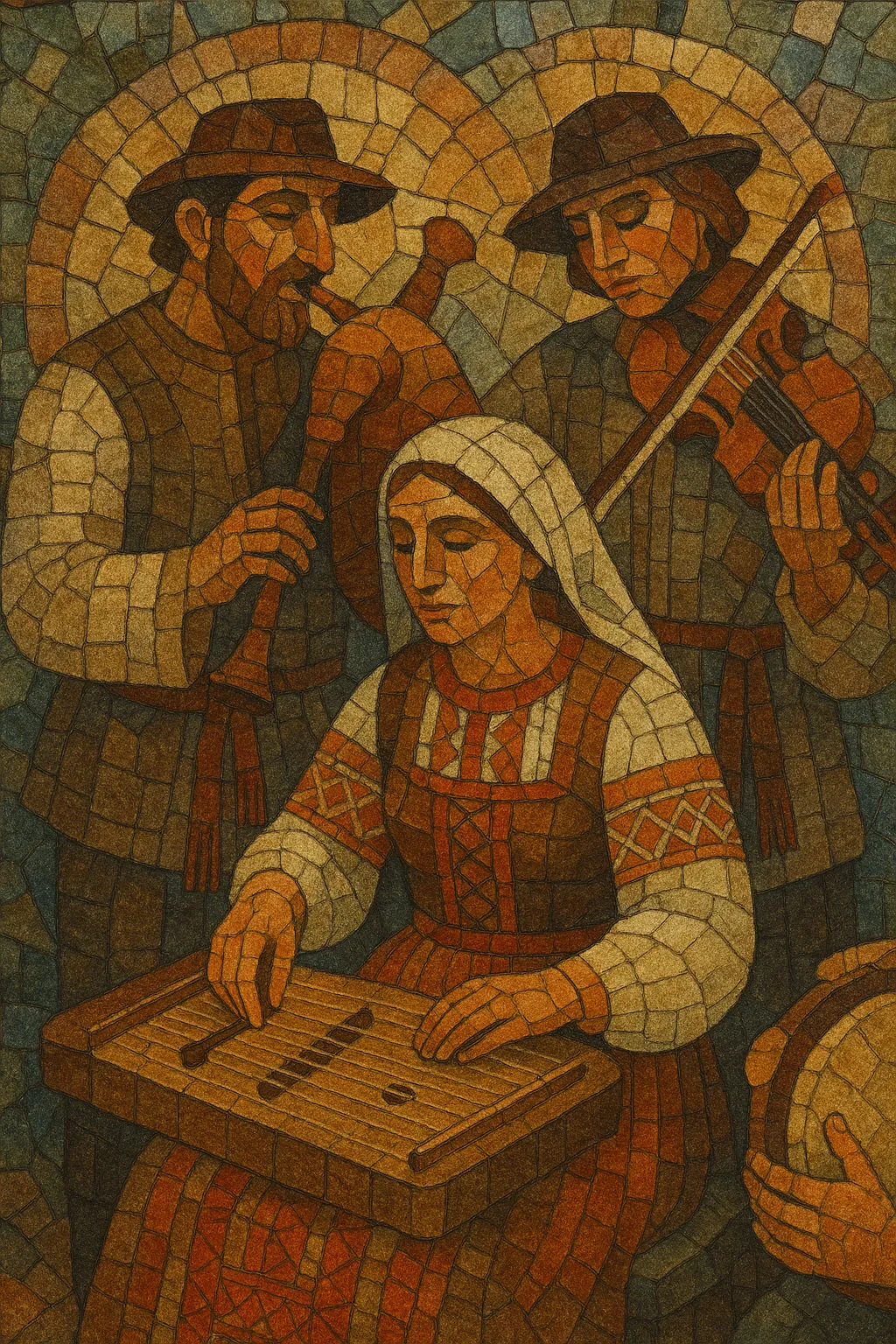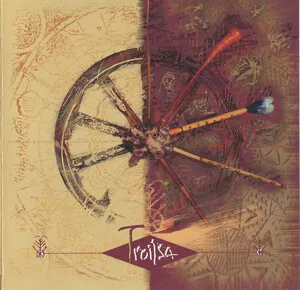Belarusian folk music is the traditional music of the Belarusian people, shaped by agrarian life, seasonal ritual cycles, and a blend of East Slavic and Baltic cultural layers.
It features rich village polyphony and heterophony (podgolosie) where a lead voice is shadowed by improvised counter-lines, often over a sustained drone. Melodies tend to be modal (Dorian, Mixolydian, Aeolian), with narrow ambitus and formulaic cadences.
Core instruments include the tsymbaly (hammered dulcimer), duda (Belarusian bagpipe), zhaleika (single-reed horn), sopilka/dudka (end-blown flutes), skrypka (fiddle), bubon (frame drum), and later the garmon/bayan (button accordion). Dance rhythms drive forms such as the polka, lyavonikha, karagod circle dances, and borrowed neighbors like the krakowiak.
Text genres span wedding songs, laments, lullabies, field/work songs, and calendar rites (Kalyady carols, Kupalle midsummer songs, and harvest Dozhynki), voiced in an open-throated village timbre that can sound both bright and earthy.
Belarusian folk music emerged from medieval East Slavic village life, absorbing pagan ritual layers and later Christian (both Orthodox and Catholic) practices. Calendar-ritual cycles such as Kalyady (winter), Vesna (spring), Kupalle (midsummer), and Dozhynki (harvest) organized musical life, with songs accompanying communal tasks, rites of passage, and social gatherings.
From the late 1700s onward, nobles, clergy, and early folklorists began notating tunes and texts. In the 19th century, ethnographers systematically collected songs and instrumental tunes, capturing hallmark features like heterophonic village polyphony, modal melodies, and the prominence of the tsymbaly and duda.
During the 20th century, state ensembles professionalized folk performance, standardizing choral textures and introducing staged arrangements. Despite stylization, village traditions persisted, and field expeditions documented authentic singing styles, regional dialects, and local repertoires. VIA groups (vocal-instrumental ensembles) popularized folk-inflected songs across the USSR.
After 1991, a strong revival movement emphasized authentic village performance practice, archival research, and workshops. Parallel scenes fused folk with rock, world, and early music revivalism, bringing Belarusian instruments and melodies to international stages.
Contemporary ensembles balance scholarship and creativity: some focus on archival accuracy and rural timbres; others blend folk with medieval reconstruction, jazz, and pop/rock frameworks. Festivals, community choirs, and digital archives continue to document and revitalize the repertoire.








